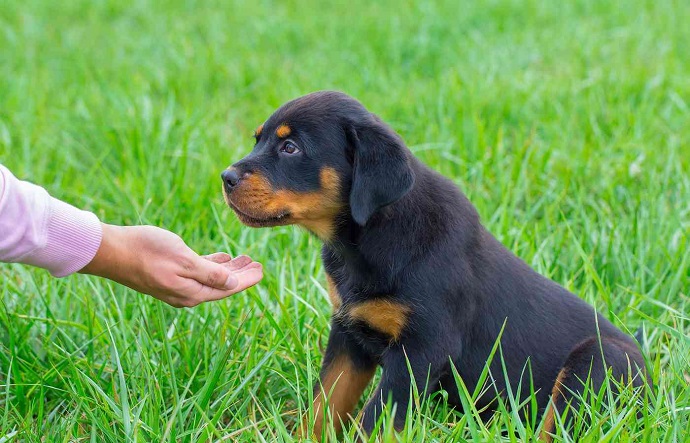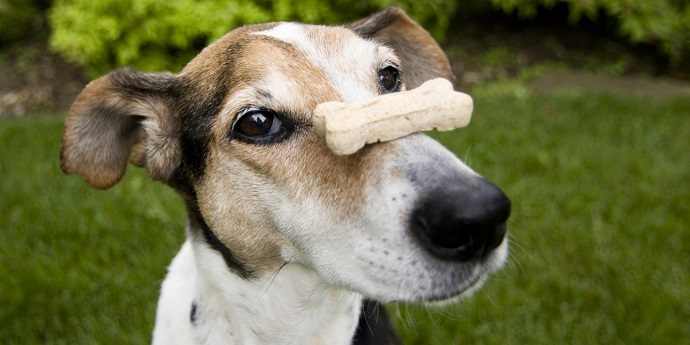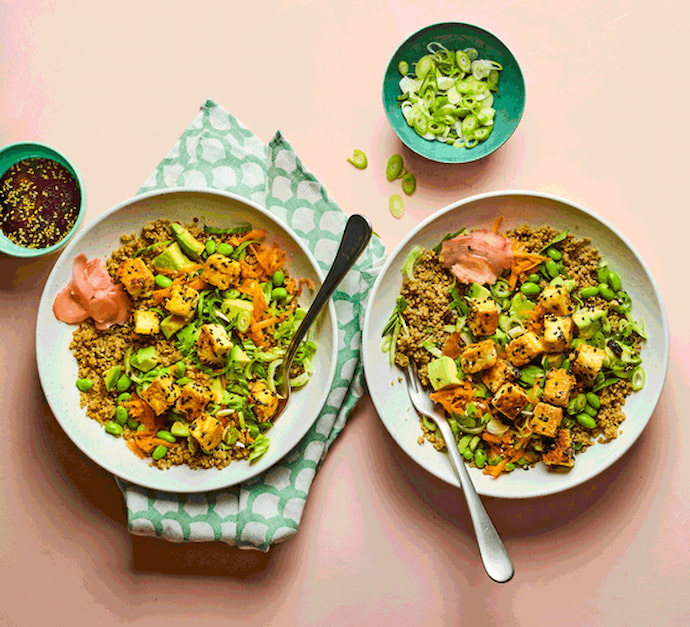
People get dogs for many reasons, but the primary one is companionship. Having a dog means experiencing a close relationship filled with affection and loyalty each day. There’s nothing better than having someone warm and fuzzy greeting you at the door every time you come back home.
But the other part of this relationship is slightly different. The chief motivation why dogs love you and stay with you is their survival. So, while they are here for you to love them, you are there to feed them. However, this isn’t really a bad thing.
Dogs Respect the Hand That Feeds Them

Cute, upbeat and loyal, dogs depend on humans to get their food. This state of affairs was established long since the origin of the dog and it remains valid to this day. And there is one essential area where you can use this in your favour – training dogs to behave well.
If you leave your dog alone it will fall back to its innate and natural instincts. In most cases this means dog poo all over the house, barking at everyone and everything, tearing up furniture and regularly misplacing objects. No one wants that. That is why we have a variety of training options at our disposal that can be made more effective with the help of tasty and healthy dog snacks.
Training for Obedience

Obedience training is best done by rewarding the desired behaviour. The end goal is a dog that responds to verbal and visual cues in a predictable manner.
You can reward with praise, with play, and with food. Positive reinforcement (with words like good boy, good job, yes) of appropriate conduct has some merit, but they are not your kids. Meaning, dogs will not care much if you approve of their behaviour. Their focus lies elsewhere.
Rewards can come in the form of some extended playtime and “personal” attention. Playing their favourite game will win you some puppy love points, but will not provide you with decisive influence. Cuddling and petting can help too, to a limited extent.
By far the most effective obedience training reward is food. When given strategically it will build a bond that will allow you to train your dog over time. It’s a practice that requires a nuanced approach and has to be adjusted to your particular dog.
How to Properly Use Dog Snacks During Training

- Rule #1 Reward, Don’t Bribe
Bad timing is a common mistake when using treats as a reward. You want to give the reward after you get the desired response. If you give the reward too soon, or before the action has taken place, then you are bribing your dog. And no one benefits from this, certainly not you. This won’t send a clear message to the dog and your dog can start using this to its advantage, gaining control over you instead the other way around.
Let’s run this through an example. You want to teach your dog to sit. The cue is given and your dog is still standing on all four, batting its eyelashes at you. You take pity and satisfy its sad look of expectation with a snack. Then you get the sitting pose. This is typical bribing with the control remaining in your furry friend’s paws.
On the other end of the spectrum, training with snacks shouldn’t be a staring contest either. If your dog shows that the command is understood and makes a small effort in obeying it, you can award them with a small treat. Sometimes they need a small nudge to get going. Whatever the case, don’t forget the clear distinction between earned reward, deceitful bribe and motivational nudge.
- Rule #2 Rewards Should Be Small and Numerous
When you get the action you are aiming for, the size of the rewards should be kept small. Dogs do not appreciate the quality of the snack, they will prefer to see a lot. If you spend all the treats in acknowledging petty advancement in the training, your session might stop then and there. The fuller it is, the more likely it is that the dog will lose its motivation to even listen to your commands.
Avoid chunky and time-consuming treats during training. They should be easy to chew on the spot, and eaten fast. Remember, the purpose of the session is not to feed them, but to teach them something new. Multiple kinds of small dog snacks (with different tastes, shapes and colours) are more useful during training.
- Rule #3 Training Should Be Done Away from Distractions
The success of the training session depends heavily on the setting. Your home or any familiar environment (backyard) is the best place to practice. If you try to do this outside, in a crowded spot, you are likely to get poor results.
For a dog that spends its days practically forcefully locked up in an urban setting, the outdoor has too much distractions that will get its attention. When you get your dog out, it will race straight towards little children playing, a ball in the park or cats worthy of its usually suppressed interest.
- Rule #4 Phase Out Rewards When the Command Is Effective
You will need tasty dog treats as a motivational tool for future training goals. Once your command is followed through on a regular basis, phase out food as a reward. When I say phase out, I don’t mean to remove it entirely. If you stop rewarding your dog, it will stop performing the trained activity. This might not be apparent immediately, however, prolonged periods without any rewards will make your dog stop obeying you.
This manipulation of the amount you offer as a reward after the dog is trained is an art in itself. Your own experience will teach you lessons, but for long-term success of your efforts, consult resources that are specific to your dog’s age, type (breed) and size.
- Rule #5 Beware of Side Effects
When using treats in training, take into consideration the needs and health of the dog. Meaning, do not give it more food than it actually needs. Learning proper behaviour should not come at a cost on their health. A common side-effect in such situations is overeating which can lead to obesity in dogs.
The last rule is sort of known outside of the training context. Do provide a wonderful dog feast with snacks once in a while as an outstanding reward. Give them some antlers or goat horn to enjoy. Just keep in mind that high-value treats are employed only when deserved.





















